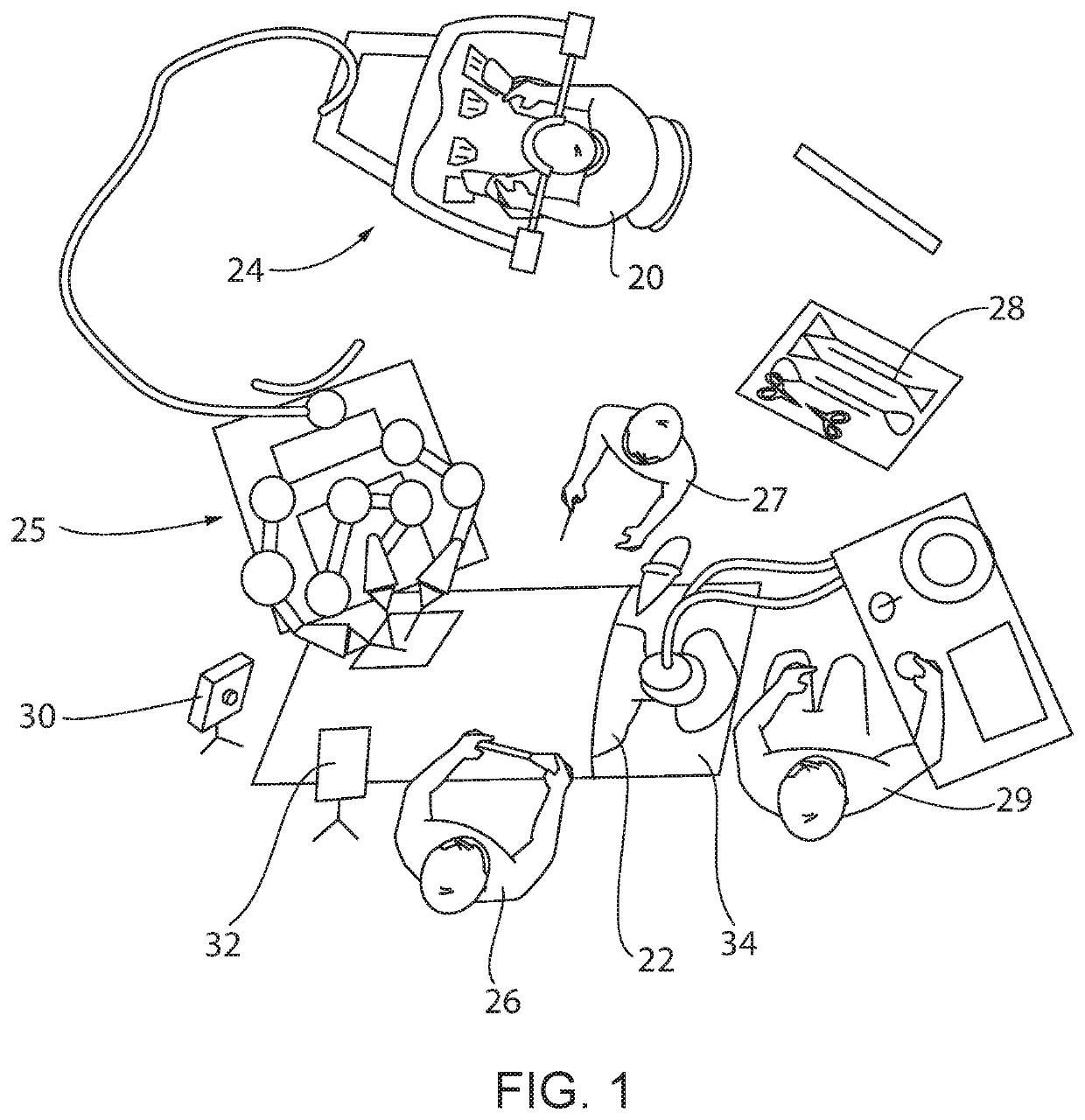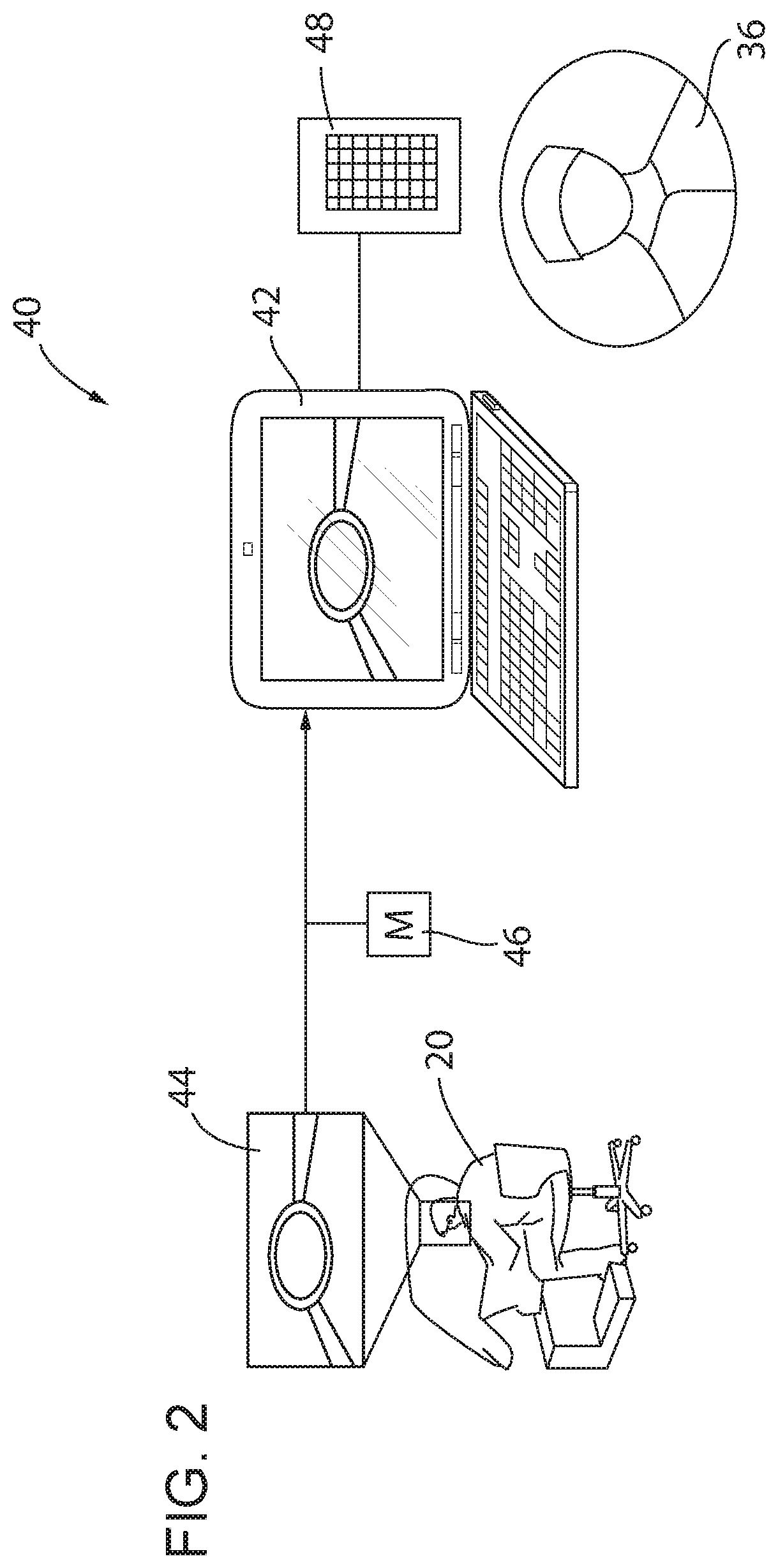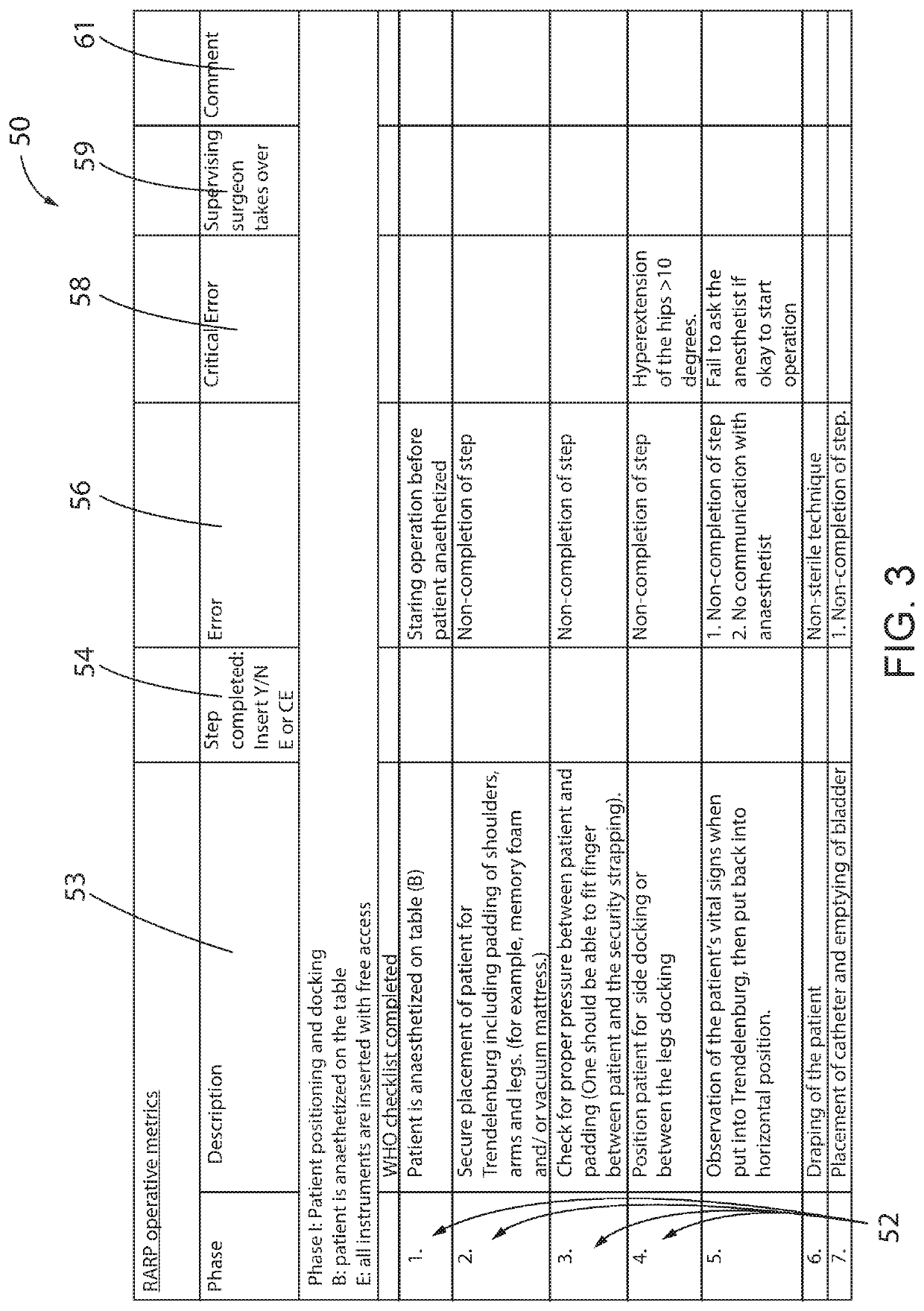Simulator Based Training Processes for Robotic Surgeries
a robotic surgery and simulator technology, applied in the field of simulator based training processes for robotic surgeries, can solve the problems of increasing the likelihood of complications, new risks, and the need for new training, and achieve the effect of identifying outliers in performan
- Summary
- Abstract
- Description
- Claims
- Application Information
AI Technical Summary
Benefits of technology
Problems solved by technology
Method used
Image
Examples
example
[0064]Referring to FIG. 6, the RARP procedure metrics were grouped into twelve separate phases of the procedure. Each phase contains a series of related, unambiguously defined, observable procedure events (steps) with specific beginning and ending points to be evaluated. There are also errors and critical errors for the expert 36 to look out for throughout the procedure. The RARP procedure metrics include 81 steps, 304 errors (95 unique), and 90 critical errors (19 unique). The 81 steps and the errors and critical errors associated with the 81 steps are listed in the table of FIG. 6, and as further described below.
[0065]Phase I: Patient positioning and docking
[0066]As can be seen in the table of FIG. 6, the first phase, Phase I: Patient positioning and docking, may include twenty-three listed steps, each optionally including associated error(s), critical error(s), and / or comments as further described below. During the first phase, the patient is anesthetized on the operating table a...
PUM
 Login to View More
Login to View More Abstract
Description
Claims
Application Information
 Login to View More
Login to View More - R&D
- Intellectual Property
- Life Sciences
- Materials
- Tech Scout
- Unparalleled Data Quality
- Higher Quality Content
- 60% Fewer Hallucinations
Browse by: Latest US Patents, China's latest patents, Technical Efficacy Thesaurus, Application Domain, Technology Topic, Popular Technical Reports.
© 2025 PatSnap. All rights reserved.Legal|Privacy policy|Modern Slavery Act Transparency Statement|Sitemap|About US| Contact US: help@patsnap.com



